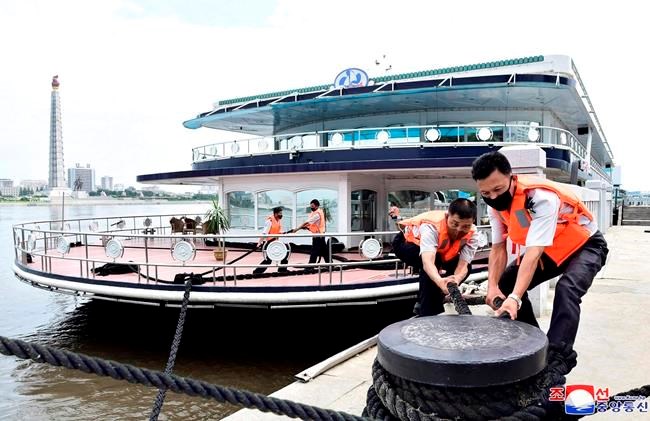SEOUL, Korea, Republic Of — A typhoon
No casualties have been immediately reported in either South or North Korea as a downgraded Typhoon Bavi headed into China after passing near the North Korean capital, Pyongyang, South Korea’s weather agency said.
Bavi had packed maximum winds of 133
After the strong winds and rain stopped, pedestrians and cyclists returned to Pyongyang’s wet streets Thursday afternoon, moving between scores of uprooted trees and at least one bent traffic sign.
The North’s Korea Central TV showed footage of snapped trees and utility poles and flooded roads. It reported damage to houses and public facilities in North Hwanghae and South Hwanghae provinces, where the typhoon made landfall. Roads were also flooded in the city of Nampo, which is closer to Pyongyang.
In South Korea, the Ministry of the Interior and Safety reported damages to buildings, walls, roads and other structures.
By Thursday afternoon, power had been restored to most of more than 9,300 South Korean homes, including over 3,500 in cities and towns near Seoul and around 900 in the southern resort island of Jeju, which was hit by the typhoon on Wednesday.
More than 470 domestic flights in and out of Jeju and the southern mainland city of Busan were
Workers in Seoul and other major cities were restoring makeshift coronavirus testing stations that had been dismantled out of concerns that the tents and booths wouldn’t have withstood the strong winds.
The North’s official Korean Central News Agency said earlier this week that leader Kim Jong Un had called for thorough preparations to minimize casualties and damage from the typhoon. Fishing boats were moved and buildings, farms and railroads reinforced, according to state media.
The storm comes weeks after torrential rains caused flooding and massive damage to homes and crops in North Korea, inflicting further pain to an economy ravaged by border closures over the pandemic and U.S.-led sanctions over Kim’s nuclear program.
Kim Tong-Hyung, The Associated Press



